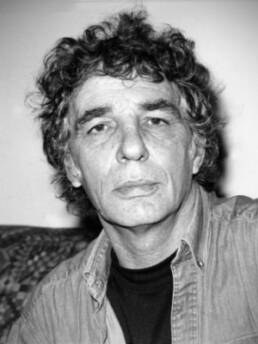These stories may contain descriptions of childhood trauma and abuse. Aboriginal and Torres Strait Islander people should be aware that this website may contain images, voices or names of people who may have passed away. If you need help, you can find contact details for some relevant services on our support page.
Iconic Melbourne, Australia poet, Shelton Lea (1926-2005) was in a Foundling Home prior to being adopted.
Philip Anthony Roberts was born to twenty-year-old Gwyneth Roberts at The Haven in North Fitzroy, Melbourne. The Haven was set up in 1897 by the Salvation Amy as a Foundling Home and Refuge and had, amongst other functions, served as a maternity hospital and babies home.
Philip was adopted at thirteen months old by members of the famous chocolate-making family, Darrell Lea. He was renamed Shelton Giles Kimball Lea. Along with two other children, Shelton had been adopted as a playmate for the “four natural Lea children” (Georgeff, 4). According to biographer, Diana Georgeff, the adopted children were aware from the beginning that they were adopted and could not expect to inherit any of the Lea fortunes.
Shelton did not settle easily into his new home, and when he was three his adoptive mother, Valerie Lea, took him off to his first psychiatric appraisal. The psychiatric team was concerned about Shelton’s home environment, including Valerie’s rejection of Shelton.
By the time he was nine years old, Shelton was regularly running away from home and often in trouble with the police.
The beginning of the formal rejection of Shelton by his family occurred when he was thirteen and caught stealing. First, he was taken to a psychiatrist and then he was locked up in Turana, referred to colloquially as the ‘rat bins’.
As a fifty-year-old Shelton still remembered his arrival in Turana at the age of fourteen:
I was escorted in through locked sections one after the other. Upstairs, unlock, pass through, lock. Next section, unlock, pass through, lock. The police stayed with us. The Turana officers were in blue, like police, with badges on their pockets and sleeves, and they all carried old keys on big solid rings. They were keys out of another time, huge keys for turning large locks in heavy doors (Lea cited by Georgeff, 69-70).
After 10 days in Turana, Shelton was sent to St John’s Home for Boys, an Anglican Boys Home established in 1924.
A pattern of being confined to Homes and then running away continued through Shelton’s teenage years. On one occasion he went from the Menzies Boys’ Home in Frankston on the Mornington Peninsula, approximately 54 kilometers south of Melbourne, to Sydney – and then back. Soon after he was made a ward of the (Victorian) state and assigned to the jail section of Turana.
Shelton Lea went on to do time in the infamous Pentridge Prison as a sixteen and a seventeen-year-old. C-Division held 360 prisoners but had no sewage; instead, there was a cesspool, the stench from which pervaded the building.
As an adult, he made the decision to give up crime and become a poet. Lea published nine collections of poems and performed them extensively, he also founded Eaglemont Press, publishing the works of many other poets.
In his fifties, Shelton Lea was still grieving the loss of his birth mother.
References:
“Remembering Shelton Lea.” Rochford Street Review, 15 May 2015. https://rochfordstreetreview.com/2015/05/15/remembering-shelton-lea/
“St John’s Home for Boys and Girls (1958-1997).” Find & Connect, 2014. https://www.findandconnect.gov.au/ref/vic/biogs/E000211b.htm
“The Haven (1897-1988).” Find & Connect, 2014. https://www.findandconnect.gov.au/guide/vic/E000265
“Turana (1955-1993).” Find & Connect, 2014. https://www.findandconnect.gov.au/guide/vic/E000626
Image available here.
